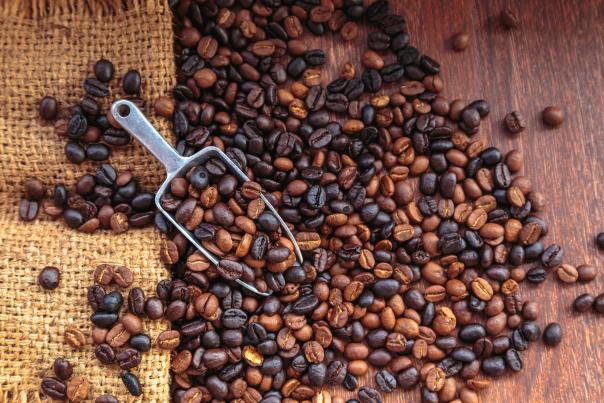
The cost of living on coffee
There’s no denying that the UK is a nation of coffee drinkers, in fact a whopping eight in ten of us gulp down some form of java whether it’s instant, ground, chilled or from a machine. Standing on every high street corner, coffee shops reign as king when it comes to selling coffee, with sales growing by 11.9% this year alone despite the average price of a coffee going from £2.70 to £3.20.
However, extreme weather conditions resulting in a poor bean crop and the cost of fuel to ship beans will mean the pennies to buy a cup of Joe will unfortunately continue to grow. Coupled with the cost of living crisis, the coffee market will take a hit this year with volumes expected to slip by 2.5%.
What’s your flavour?
Even though the average price of a coffee has spiked, the demand for premium and gourmet coffee is higher than it’s ever been with 55% of people agreeing that premium coffee is an affordable luxury. This makes sense when you consider the price of other food and drink at a premium level.
Indulgence is another trend that’s still going strong and it’s all thanks to flavoured coffee pods. While you may not serve this style of coffee in your canteens and staff rooms, there’s nothing stopping you from serving a range of mouth-watering flavoured coffees. Switch it up by offering creative flavours such as black forest gateaux, chocolate orange or vanilla almond.
Direct action coffee
Consumers are starting to pay more attention to the impact their food and drink has on the environment, and ethically sourced ingredients have become a top priority for both consumers and operators. So if you're doing something to support the coffee farmers and communities where your beans come from, let your customers know.
More and more coffee companies are partaking in ‘direct action’, meaning they are helping those who live and work where the coffee beans come from directly. Whether it’s the money donated or the freshwater you helped supply to a village, a simple box out on your menu, poster, or table talker with photos of the work achieved, will inform consumers of the good work that’s being done by them simply drinking their coffee.
The amazing technicolour lattes
While there’s nothing that can replace that robust, smoky coffee flavour, some healthy non-coffee options are starting to take centre stage. Beetroot, turmeric and matcha lattes not only taste great but look fabulous too.
While there is no caffeine in beetroot and turmeric lattes, they contain many important nutrients and vitamins that can improve one’s health. They pose as the perfect option for those that don’t drink coffee or consume caffeine but want to partake in that coffee experience with their colleagues and friends during a coffee break.
Research everything down to a T
The best way to learn about coffee is to taste it. With so many different blends, styles and flavours it can be a bit daunting to figure out where to start. There’s nothing stopping you from carrying out tasting sessions with your consumers and having them vote on their favourite coffees. It’ll save you from stocking up on coffee that isn't moving and drive sales of the ones that are.
A tall order of tips
Be seasonal. Why do you think high street coffee shops are so successful at Christmas and summertime? Because they adapt their drinks offering according to the season. Your customers will appreciate a warm spiced gingerbread latte at Christmas or a salted caramel affogato when the sun is blazing. Take inspiration from the season to drive sales.
Be mindful though. While taking advantage of the next big trend is all good and well, don’t let it encompass everything you do. Remember the classics – cappuccinos, lattes and Americanos are always going to sell. Concentrate on what you have and perfect it, as people will always remember those coffees that are excellent, but also those that are terrible.
Finally, perfect your craft. Yes, making a heart on a latte is lovely, but does it taste great? Learn how to make your espressos exceptional, your lattes luscious and your flat whites fantastic. Then you’re sure to encourage repeat visits.
The milk is greener on the other side
Although cow’s milk storms ahead of every other type of milk (consumed by 88% of people), two in five people worry about dairy farming’s greenhouse gas emissions. So stocking up on plant-based alternatives such as soya, almond, oat and rice milk will appeal to these consumers.
But what if technology was able to open the door to dairy alternatives with more sustainable features? Genetic engineering technology can be used to produce milk and other dairy products without the need for traditional agriculture. This exciting possibility appeals to 58% of under 45s, who would be happy to try this in their coffee or tea, spiking to 63% for those under 25. So if you’re looking to embark on a sustainable journey, genetic engineering could ‘milk’ all the difference.
In the same way that people are adopting a flexitarian diet with meat free Mondays and fishy Fridays, consumers are also doing the same with their milk. In fact, 80% of plant-based milk drinkers say that they also use standard animal milk, so giving consumers the ability to choose what they’d like with their coffee will show that you're being attentive to their needs and subsequently increase margin.
To find out more, visit here.